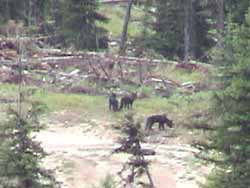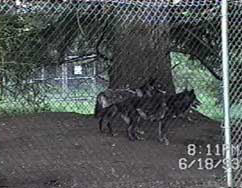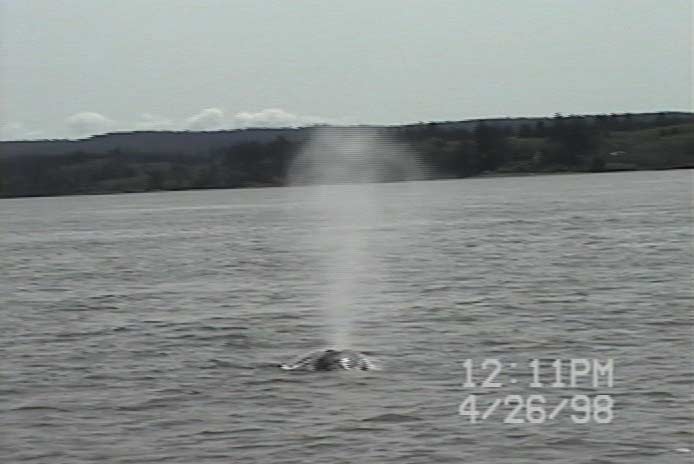Review of Montana's Wolf Management Data

Reference: Mallonee, J. S. (2011). Hunting wolves in Montana - where are the data? Nature and Science, 9(9), 175-182, ISSN 1545-0740.
Abstract: Management agencies have claimed that the recovery and public hunting of wolves is based in science. A review of their statistics demonstrated that data collection methods did not follow a scientific protocol which resulted in flawed and often incorrect data. Consequently, agencies do not know the total number of wolves in Montana, a major reference point used by wolf managers. Therefore, the quotas proposed for public wolf hunts are completely arbitrary, and management decisions in general have not been based on facts. This has produced a wolf management system that lacks scientific perspective and does not utilize what is known about the wolves' role in sustaining healthy ecosystems. Instead, the absence of verifiable data suggests that management decisions are often based on opinion and politics rather than science.
To read or download paper: click here.
The Fishtrap Pack: Pack Assembly

Reference: Mallonee, J. S. (2008). Movements of radio collared wolves and their significance on pack assembly. The Journal of American Science, 4(1), 53-58, ISSN 1545-1003.
Abstract: Little is known about wolf pack assembly throughout the year, such as whether or not pack members do most everything together as a group. This study, however, presents the first quantified evidence of how the movements of individual pack members can indicate the degree of pack assembly over an annual period. The movements of three radio collared wolves (Canis lupus) in the Fishtrap pack of northwest Montana, were monitored over a 603-day study period and 532 daily telemetry surveys. Each survey presented a variety of possible pairing results, from finding a single collared wolf to finding all three together at the same location. All possible combinations were observed, and the three collared wolves were found together in only 31.0% of the surveys. For the pack to have been fully assembled, the three collared wolves would have had to be present. Therefore, this pairing combination represented when the pack potentially could have been fully assembled, although no assumption was made that they were. Nevertheless, these preliminary results indicated that pack members were together in 31% or less of the surveys. Although the percentage of surveys did not correlate directly with total time spent together, it did suggest the Fishtrap pack spent the minority of time fully assembled throughout the year.
To read or download paper: click here.
Tenino: Living With Post-Traumatic Stress

Reference: Mallonee, J. S., & Joslin, P. (2004). Traumatic stress disorder observed in an adult wild captive wolf (Canis lupus). Journal of Applied Animal Welfare Science, 7(2), 107-126.
Abstract: Tenino was an adult female wolf, born in the wild and placed into captivity at 1 year of age because of her participation in livestock depredation. Her method of capture, well documented, involved being darted twice by helicopter and translocated twice. This method of capture would have exposed her to the 2 factors that are important in the etiology of posttraumatic stress disorder in humans: uncontrollability and unpredictability. In a case study we conducted, Tenino displayed symptoms that were similar to those of humans with posttraumatic stress disorder. These symptoms included hypervigilance, exaggerated startles, generalized fear, avoidance, and arousal. She also displayed looking up behaviors that occurred during the presence of perceived threats such as a neighboring rancher's gunshots, the keeper truck, some keeper activity, and occasionally aircraft. When compared to 3 other wolves, including her enclosure mate, these behaviors were exclusive to Tenino.
To read or download paper: Click here.
Summering Gray Whales

Reference: Mallonee, J. S. (1991). Behaviour of gray whales (Eschrichtius robustus) summering off the northern California coast, from Patrick's Point to Crescent City. Canadian Journal of Zoology, 69, 681-690.
Abstract: This study quantifies basic dive characteristics and behaviour patterns of undisturbed gray whales (Eschrichtius robustus) observed summering at four northern California locations: the Big Lagoon-Patrick's Point area, Orick, Klamath River mouth, and Crescent City. Observable behaviours were limited to several locomotions (swim slow, swim moderate, swim fast, and floating) seen in different behavioural contexts (milling, circling, pluming, and transit). Sixteen behaviours were observed and they fit naturally into locomotive-context categories (i.e., swim-milling, swim slow - circling, etc.). Each behaviour was described using behavioural observations and dive characteristics. Behaviours that did not appear goal oriented or directed, i.e., milling and floating, had highly variable dive characteristics. More specific behaviours, such as circling and pluming, were less variable. Some specific and less directed behaviours appeared functionally related and usually occurred together. Apparent bottom feeding was observed and the Big Lagoon - Patrick's Point area appeared to be a favoured feeding site, as evidenced by mud plumes and repetitive circling of surfacing animals. Feeding was composed of at least three observable behaviours: circling, circling with pluming, and milling with pluming. Locomotive-context categories are useful in refining broad behavioural definitions and quantifying basic behaviour patterns. This approach can enhance the interpretation of observable surface behaviours.
To read or download paper: Click here.